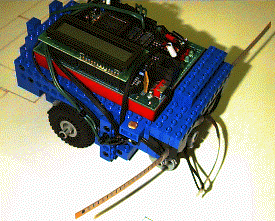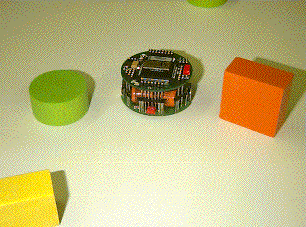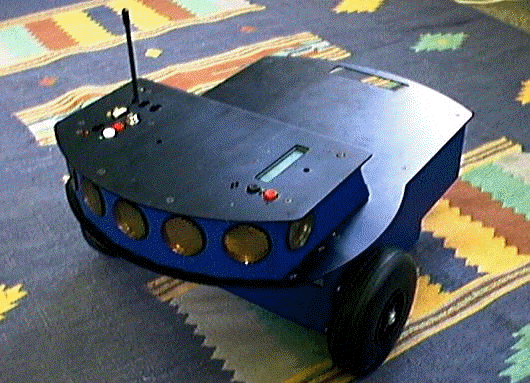A Robot Laboratory for Teaching Artificial
Intelligence
Resource Kit



This packet contains a description of resources and materials required to
augment an existing computer laboratory with robot building facilities.
The augmented laboratory can be used in an undergraduate Artificial Intelligence
(AI) course. This resource kit includes a paper describing our experiences,
specific details on equipment and materials required, as well as sample
laboratory exercises from our first offering of the AI course. More up-to-date
materials can be accessed via the world-wide-web pages listed at the end.
For more information, please feel free to contact the authors.
Contents
- A Robot Laboratory for Teaching Artificial Intelligence
(SIGCSE 98 Paper)
In this paper, we have described a
project that involved the creation of two identical robot building laboratories
at two undergraduate institutions. The laboratory has been used for teaching
the undergraduate AI course. Laboratory materials have been made available
along with detailed information on how to create such a laboratory at other
institutions. The laboratory helps introduce a central theme in the teaching
of AI, and, at the same time, strengthens the role AI plays in the core
computer science curriculum.
- Outfitting a Robot laboratory
Here,
we present, in complete detail, the laboratory environment, the equipment
required, and ordering information for setting up a robot building laboratory.
- Sample Syllabus for an AI Course
A summary of the syllabus of our AI course that is integrated with
the robot building laboratory.
- The Robot Exercise
A
class exercise involving the emulation of a blocksworld robot by four students.
- Robot Laboratory Handout
Specific
lab exercises from our first offering.
- A Sample Control Program
An Interactive C, robot control program.
- For More Information
Useful
links for further reference.
This resource kit was prepared as a document distributed at ACM SIGCSE
1998, Atlanta, GA in the NSF/ILI Project Demonstrations.
This work was supported in part by grant DUE-9651472
from the National Science Foundation's ILI/IP program, grants from Bryn
Mawr College, Swarthmore College, The Mellon Foundation, and the Howard
Hughes Medical Institute.

